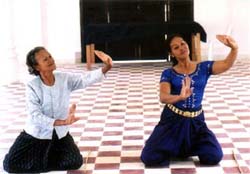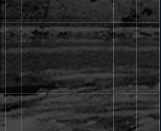
Photo
Copyright @ Valerie Ann Oliveiro |
Continuum
will be presented in Singapore and there are invitations from Australia,
Denmark and Germany with others expected. The main effort is to
find funding to bring it to Cambodia, but not to Tuol Sleng or a
place like it: "If we want to make a presentation about the
healing process of the Cambodian people, we have to find a place
that is accessible to them." Any presentation at all would
face opposition--a lot of people who want to move on and would be
angry with them for digging the past up. The pressure now is intense
to become part of the new global economic movement and to turn away
from the disastrous past as Angkor becomes a prominent tourist destination.
When the company went back to the labor camp village they found
young kids who didn’t believe mass graves were there. They
thought that their parents and grandparents were just "spinning
a myth."
But there are reasons to hope--new ones. When they went to the labor
camp, the villagers told them that a few weeks before somebody else
had come there in search of his mother’s bones. He was from
Phnom Penh and had come by himself-- perhaps, now that life is more
stable, a sign of rising private interest in trying to come to terms.
And just this week (July 24) Seth Mydans reports in the The New
York Times that "the (Cambodian) Senate unanimously approved
a law that would allow creation of an international tribunal to
try surviving leaders of the Khmer Rouge, the Communist movement
responsible for the deaths of more than a million people from 1975
to 1979. The law needs final approval by the Constitutional Council
and King Norodom Sihanouk." Upon review and approval by the
United Nations, a trial could then begin.
"I hope that, when we perform Continuum in Cambodia, other
people will begin to do things like it and start to think about
their personal lives as inspiration for a new mythology," reflected
Keng Sen. "Maybe ours is a project that will exhaust itself.
These four people may one day not feel it necessary to do this anymore.
That is actually what I think about most and what I hope will come.
That’s very unusual, because as an artist you’re always
thinking that you want to prolong the life of a work. But here I’m
hoping that one day it will just not be necessary any more."
Of
related interest:
Prosecuting Genocide in
Cambodia: The Winding Path Towards Justice
|
|


